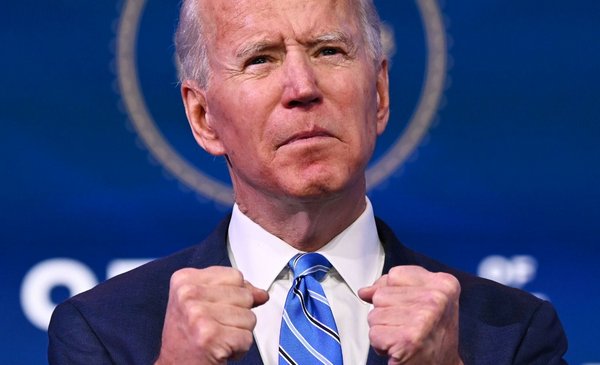The United States economy resumed its growth in the third quarter of the year after contracting in the previous two quartersand gives President Joe Biden some breathing room before the midterm legislative elections, although a recession could only be a matter of time.
During the three months from July to September, the Gross Domestic Product (GDP) of the United States grew by 2.6% at an annualized rate (the 12-month projection if conditions were maintained at the time of the measurement), according to the first estimate of the Department of Commerce published this Thursday.
The world’s largest economy is expanding for the first time since early 2022, and the rebound is stronger than anticipated. Analysts had expected GDP growth of 2.3% in the third quarter of the year.
US GDP contracted in the first two quarters of the year, falling 1.6% and then 0.6% over the immediately previous quarterbut without entering a recession according to the Biden administration and many economists.
While two consecutive quarters of falling GDP corresponds to the commonly accepted definition of a recession, the strength of the labor market in particular means that the world’s largest economy does not fall into that category.
The calculation of GDP at an annualized rate, a measure favored by the United States, compares with the previous quarter and then projects the evolution throughout the year.
Growth is 0.6% if you simply compare it to the previous quarter, as other advanced economies do.
Balm for Biden
President Joe Biden He took advantage of Thursday’s data to praise the strength of the US economic recovery.
“For months, doomsayers argued that the US economy was in a recession, and congressional Republicans encouraged” that idealaunched the president, in campaign for the November 8 legislative elections in which his Democratic Party is playing for control of Congress.
“But today we had more evidence that our economic recovery continues to advance,” added the president.
These data show “positive dynamics in household spending, a rebound in business investment and persistent weakness in real estate investment,” Rubeela Farooqi, an economist at HFE, said in a note.
“Going forward, risks are on the downside, particularly for consumption, as families continue to struggle with high prices and a likely slowdown in job growth” in the country, it added.
“The strength of the dollar and the weakness of global growth will limit exports,” said Ian Shepherdson, an economist at Pantheon Macroeconomics.
Recession risks in 2023
The uptick is good news for Biden ahead of the election.
But the risks of recession persist for the coming months. Biden himself had mentioned earlier in the month the possibility of a “very mild recession.”
The central issue for the US economy is inflation, which remains near its highest level in 40 years, at 8.2% in the 12 months to September in the United States, and erodes the purchasing power of households. Especially since the remedy to this rise in prices is to slow down the economy by increasing interest rates.
Mortgage or consumer loans now cost much more than before. Less consumption and less investment should cool down an overheated economy.
The Federal Reserve (Fed), the US central bankhas the cards in hand to fight inflation, and is gradually increasing its interest rates, in order to encourage commercial banks to do the same when granting loans.
DAfter four increases already, it should continue this momentum at its next meeting on Tuesday and Wednesday of next week.
And the slowdown could be global as inflation is high in many regions. Several developed countries could enter a recession in 2023, such as Germany and Italy, the International Monetary Fund (IMF) recently warned.
Source: AFP














